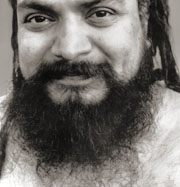Surplus, Irrelevant &
Unimportant Sections
Almost every story in Yoga Vasishta, and there are many of them, begins with a long description of idyllic nature, people and heavens. Among the longest description of nature is when the four copies of King Vipaschit, each accompanied by his court, survey the lands they had conquered, including walking on the waters of the ocean to travel to other continents.
There are several long sections, some spanning numerous chapters, describing visions of the end of creation. Vasishta describes his own visions over several chapters in the second part of Book V, but there are other detailed descriptions of cosmic dissolution.
Kings fight wars and Rama was born to be a king and fight a war against the King of Sri Lanka, the demon Ravana. Perhaps that is why Vasishta delivers such a long, detailed account of the battle between King Viduratha and King Sindhu in Book III. The wars between demons and gods get extended coverage. In the last Book, King Vipaschit battling his enemies is also an extended description ending with a catalogue of the peoples he defeated.
These long, detailed descriptions of creation, the end of creation, and battles are typically omitted in any abridgment of Yoga Vasishta, and also in more complete translations. Presumably, the idea is that these descriptions are overly long, repetitive and irrelevant to why people should read Yoga Vasishta, which is its spiritual philosophy. Descriptions of battles and cosmic dissolutions are either surplus or not important.
Creation, its end, and the wars in between are all a part of life. Yoga Vasishta is about life, how to live it without being enslaved to desires. We may read these descriptions less carefully than the philosophical parts, but to eliminate them takes away from how Yoga Vasishta works on the mind.
These long, repeated descriptions emphasize the creativity of God. There is nothing so beautiful or so violent that is not an expression of God’s consciousness.
One needs to read and re-read Yoga Vasishta in detail, the full version. Some parts we need to read slowly, others may only create images in the mind. No summary or abridgment is equal to the impact of the original, even though many, many passages seem redundant or irrelevant. There are many obscure passages and many answers that do not seem directly responsive to Rama’s questions. But somehow, it all is impressed upon the mind which becomes more open to what is really going on.
![]()

